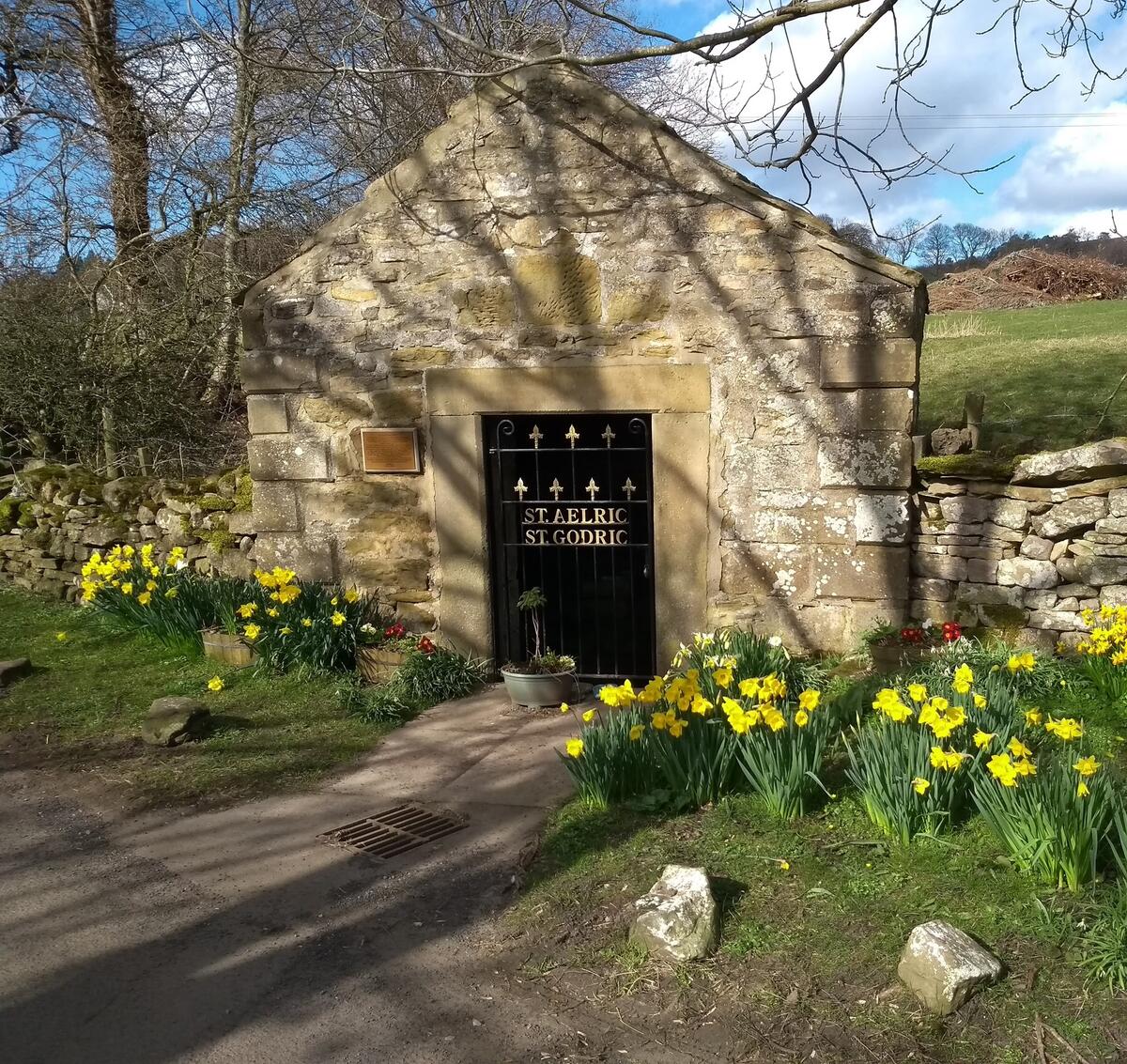Holy Well
There is a 'HOLY WELL' on Holywood Lane. To find it, leave the Market Place towards Tow Law. After about 400m, turn left before the "Bay Horse" pub, and the well is about 200m, on the right. It is alleged to have been used by St Aelric and St Godrick, in the 11th Century, though the building is clearly of much later construction.
SAINT AELRIC
Very little is known about St. Aelric’s life except that he was a very godly man who was a monk from Durham who was allowed to be a hermit in Wolsingham. He died on October 5th. 1107, was taken back by the monks to be buried in their graveyard near the Cathedral and was canonised with a festival on February 23rd. For the last year and a half of his life he taught St. Godric to be a hermit.
SAINT GODRIC
He was born to Ailward and Edwenna, in Walpole in Norfolk some time between the years 1066 and 1071, the eldest of 3 children. He died over a hundred years of age on 21st. May 1170 at Finchale in his Hermitage, near Durham on the banks of the River Wear. Sadly his canonisation was never completed.
A monk, Reginald, from the Durham Benedictine Community knew him and wrote his biography during his lifetime and afterwards, telling of his miracles also. He began his working life as a peddler, merchant and sailor, eventually being the captain of his own ship. He visited the Island of Lindisfarne where he was impressed with the life of Saint Cuthbert.
He sold his ship and gave his money to the poor and went on a pilgrimage to the Holy Land and Compostela. On his return he visited his parents, had a brief spell working for a powerful land owner. He then went on a pilgrimage to Rome taking his mother too. He then decided to be a hermit in Carlisle and sold what was left of his possessions. This was too close to the city so he set off in an Easterly direction where the forest clothed the hills and arrived at Aelric’s cave/ wooden hut in the wood. He stayed there after the death of Aelric until he had a vision of St. Cuthbert. He then left for Durham and joined another pilgrimage to Rome.
On his return he went first to Whitby and then to Durham, eventually asking the Bishop’s son, Ralph, to ask the Bishop, Ranulf Flambard, to allow him to be a hermit in Finchale. This was granted and by 1115 he was well established there. As the next 60 years passed his reputation grew with both Bishop Thomas a Beckett and Pope Alexander III reportedly seeking Godric’s advice as a wise and holy man who had visions and the gift of prophecy.
Reginald of Durham gave a described him as of middle stature, long face, initially having black hair which was white in old age, piercing grey eyes, moderate lips, legs slender and his chest deep with a very long beard. Godric’s picture is to be found in M. S. Cotton Faustinia B. vi f.16v deposited in the British Library depicting him with a deer which he is said to have sheltered from hunters.
Of the four of Godric’s songs Reginald recorded with the music settings, the brief song “ Sainte Nicholaes” is the oldest example of English musical poetry. He was the first English lyricist.
V. M. Welsh.
